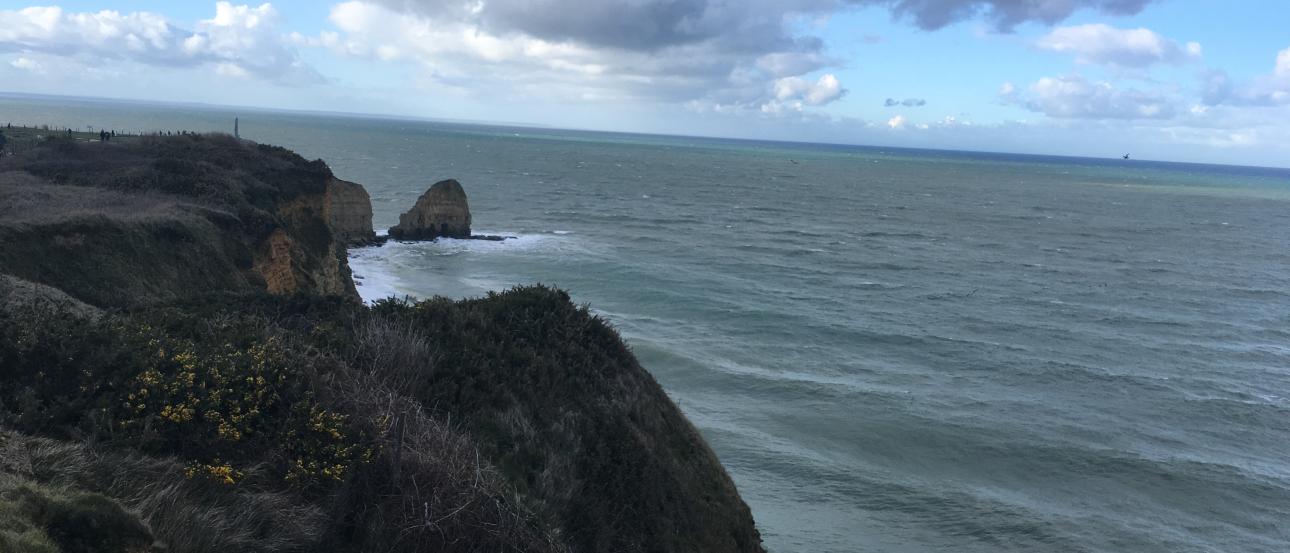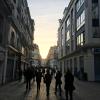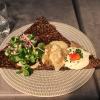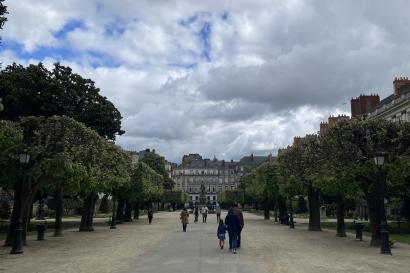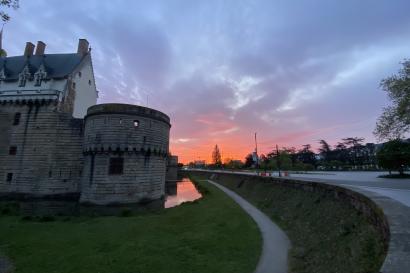This past weekend we traveled to Normandy, the northern region of France that has been a pivotal location at many points in history.
Looking back 1200 years, it is the region where the Vikings once called home in the 8th Century AD. When Charles III (king of France from 893–922) took over Normandy, the Vikings living in the region adopted French language and customs and began to be known as the Normans (or “Northmen”, a name originally designated for the plundering activities of the Vikings).
Today, Normandy is most notably remembered as the location of the Allied invasion of German-occupied France in June 1944. We had the privilege to visit the Memorial de Caen, which teaches about the events leading up to World War II, D-Day and the Battle of Normandy in a very comprehensive collection of photographs, propaganda, garments, and films. Our visit at this museum began with a film about June 1944—the month in which the Allied forces (predominantly Great Britain, France, the United States, and Canada) successfully pushed the Axis powers (the Nazis) out of France, symbolizing the Allied victory of World War II. The film included hundreds of images from the era and real footage of cities like Caen and Bayeux being decimated by the war.
Before we had visited the Mémorial de Caen Saturday afternoon, we visited the Musée de la Tapisserie de Bayeux. The museum features the Bayeux Tapestry, a 70m-long embroidered piece of cloth that tells the story of the conquest of England as led by the Duke of Normandy, William the Conqueror, in the year 1066. The tapestry was constructed in the 11th century, after this event. The tapestry shows men on horses, castles, and battles, all embroidered with vegetable-dyed wool yarn. The tapestry is displayed in a glass case through a narrow hallway, and we each had individual headsets with French narration of the different scenes of the tapestry. Little did we know that when we got the end of the hallway, the tapestry took a turn… to reveal another hallway parallel to the last one with the second half of the tapestry. Turns out, 70m, or 130 feet, of tapestry is a lot of fabric. It also explains why the tapestry took an estimated ten years to complete (and they didn’t have programmable embroidery machines in the 11th century, as far as I know).
After the visits to Bayeux and Caen, we headed to our hotel for the evening, which was located in the downtown area of Caen. Our dinner was in the dining room on the ground floor of the hotel. We had a salade de chèvre, which is very common in France. Typically, the first dish, the salad, is a small bed of lettuce adorned with tomatoes or other vegetables and small slices of toasted baguette topped with warm chèvre. The main course for most was a chicken dish, but as a pescetarian I had some delicious potatoes au gratin and a vegetable dish. For dessert, we had crème brulée, which was my first ever! It was soft and pudding-like on the inside with a top crust that was perfectly broiled. We spent the evening playing cards in our suite with a small group of friends, which is always a great way to end a day.
Sunday morning we rose early for a breakfast in the hotel which hit all the stops. In France, continental breakfasts mean much the same as in the U.S. except there is usually a larger offering of breads and confiture, as well as an arrangement of cheeses. And of course, there is usually a large coffee machine that can create on demand a latté, a cappuccino, hot chocolate, espresso, and much more. We indulged ourselves in the selections of pastries, jams, and coffee options.
For the hour after breakfast we had an hour free to explore Caen. Unfortunately, it was a rather rainy and temperamental day, but we were able to see the inside of a beautiful cathedral, a statue of Joan of Arc, and some new construction for a train system downtown. After our own tour we all arrived, slightly soaked, at the Château de Caen. At the castle we had the opportunity to go freely to the Normandy Museum and the Fine Arts museum. At the Normandy Museum we learned about a complete history of the region, from the first peoples to inhabit Normandy in the hunter-gatherer times, to the arrival of the Celts, to the invasion of the Vikings, to the Christianisation of the region. Through art and cave designs, there is evidence that Normandy had many inhabitants in prehistoric times. The museum included a section of Normandais fashion through the years as well. Normandy is largely agricultural, with a strong economy based on cattle.
At the Fine Arts Museum, I loved observing some paintings of Courbet, a Realist painter, and Manet, a pre-Impressionist painter. We kept our visit relatively short as we had important plans to go to the ‘Pancakerie’ down the street for lunch before departing on the bus. Lunch at the ‘Pancakerie’ was as eclectic as the selection of 80’s songs playing on the stereo. I had an egg/vegetable/toast dish, served in a bowl, with lots of paprika (which I love). As we ate our dishes (rather, scarfed down), we mused over the old records on display in the small place. It took us a while to order, and then another bit of time to receive our food, so as we received our dishes we had about 12 ½ minutes to finish our meals and pay before we were expected on our bus parked outside. We made great time, with a few minutes to spare. And the place was somewhere quaint I’d love to return.
Our bus voyage Sunday afternoon was to the Normandy American Cemetery, a cemetery created for those who fought in WWII. Photographs I’d seen of the thousands of white crosses here did not do justice to the actual enormity of the cemetery. It was a well-done tribute, but a heartbreaking one nonetheless. The sheer quantity of soldiers who’d fought in the war is a number I don’t know if I’ll ever be able to fully understand. The cemetery overlooks the English Channel and the rocky cliffs of Normandy, which is breathtaking. After this heavy visit, we visited an equally intense place—Pointe du Hoc. This was the American’s position in trenches along the high cliffs of Normandy, overlooking Omaha Beach. It was incredibly windy as we were completely exposed on the flat land overlooking the ocean. The trenches are open to enter, so we wandered through the many different hidden cement rooms—low ceilings, metal storage hooks, small windows, and narrow doorways. The land was carved in wide, 10-foot-deep holes all along the coast.
Alas, after many visits to places of great importance, we returned to the bus quite knowledgeable and fatigued. The ride home I listened to music and reflected on the weekend.
[Historical information provided has come from my visits to the Musée de Normandie and the Memorial de Caen, as well as a little help from https://www.britannica.com/place/Normandy and http://www.bayeuxmuseum.com/en/la_tapisserie_de_bayeux_en.html.]

Genevieve Winn
<p>I remember creating things from a very young age. What began as duct tape figurines and short stories as a child have transformed into projects of scale today. One of my favorite activities is to sew, but I also love to write. Self-expression through art and writing has always been a strong part of my identity. My hope for the future is to bring my creativity into the world in new ways by creating relationships with people and helping to create solutions to real-world problems. Learning another language is, I think, an important piece to understanding the world a little better, and to knowing how to better serve the people in it. As an IES Correspondent, I hope my writing can help other students to understand study abroad, me, and the beautiful world around us through my daily adventures!</p>
